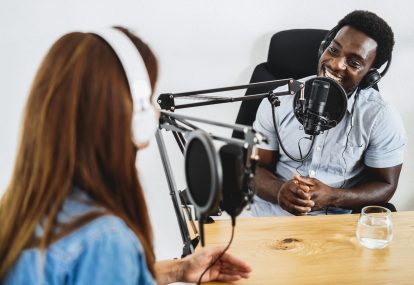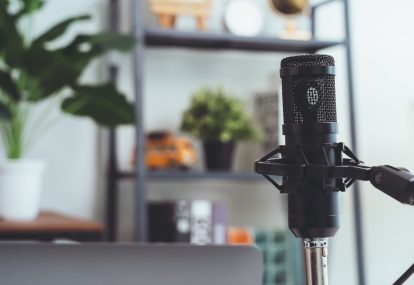While the adage “content is king” is so cliché, it will always ring true when it comes to podcasting. However, to believe that your podcast will succeed based primarily on your content is just partly true. Sure, you have an exceptional strategy in place, your script is impeccable, and things look very promising.
You can’t wait to share the episode with the truly amazing content with your listeners. You’re positive they’ll love it. Understandably, people would definitely tune in if you have awesome content to share. However, you can’t expect people to stay if you are only providing great content but the sound quality is hideous at best.
To help warrant you produce a podcast that’s as compelling as your content, ensure you have the following recording basics covered:
Check input levels
In the recording to tape days, noise floor was a huge concern than it is now. Tracking entailed a thorough balance of getting enough volume from the instrument or vocalist while making sure the recorded signal is not distorted.
With digital recording however, the noise floor can be much quieter but the tendency for people to record at levels that are high will still be there. When it happens, digital clipping or distortion can occur.
To remedy this, set input for a peak level of around -10dB. It will not only provide you with plenty of headroom for a clear and clean sound, it can also help guarantee problems down the road are avoided.
Observe proper mic technique
Hyper-sibilant “S” sounds and distracting plosives or “P-Pops” are classic symptoms of poor mic technique. In a nutshell, these issues occur when an excessive burst of air hits the microphone capsule.
If you notice a lot of sibilance and plosives in your recordings, your best (and simplest) solution would be to move off-axis from the microphone. Set your microphone up to the side so it’s angled slightly toward your mouth. Doing this will prevent any burst of air from directly hitting the capsule, resulting to a smoother and more natural tone.
Pick a good recording location
While you may sound good singing in the shower, recording in a small space with hard and flat surfaces can often result to a reverberant sounding recording. With that in mind, consider it ideal to record in a large quiet room with plenty of space around you.
If you only have a small space available, at the very least ensure there are few reflective surfaces. If not, make sure there are lots of materials that can diffuse or absorb sound like carpeting, furniture, or even a closet full of clothes.
The whole idea should be obvious—the best way to deal with audio issues would be to prevent them in the first place. Cover all the aforementioned basics and you’ll have a bigger chance of producing a recording that’s truly topnotch.
If you’re still not happy with the audio, get in touch with the professionals at Podcast Engineers. They will not only be able to polish your podcast to perfection, they can also help ensure your message is heard loud and clear.
Have you tried any of the techniques we have mentioned above? How did it go? Let us know in the comments section below!
Share this post!




